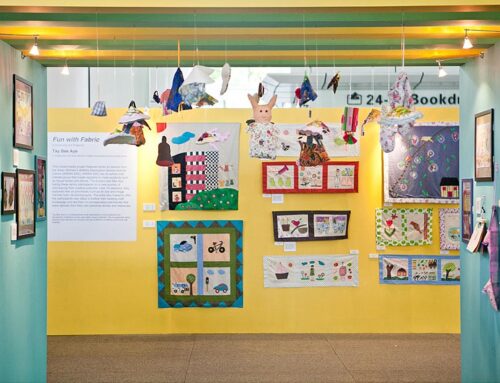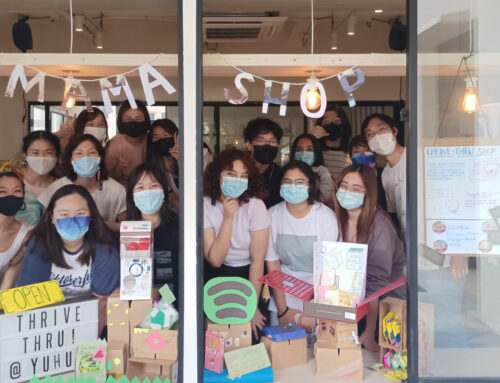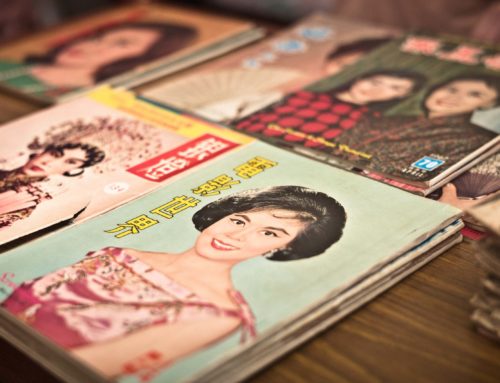Arts-based community development through the eyes of a trainee
Fresh out of university, I have been increasingly getting the dreaded question- “what do you want to do in the future?”. I have never been a decisive person, and the conclusiveness of this question has always scared me. Though I never had a definite answer, I realised after pondering over hypothetical plans that I am grounded by my love for creativity and community, something I developed through my experience of dancing and creating with friends in school. I want to continue to believe in art and be surrounded by others who believe in it as well, and to work together towards a common goal of making the world a kinder and more liveable place. This was something I was sure I wanted to bring forward into my work life and I felt that the field of community-engaged arts aligned with my beliefs and would give me a sense of purpose in working for something greater than myself.
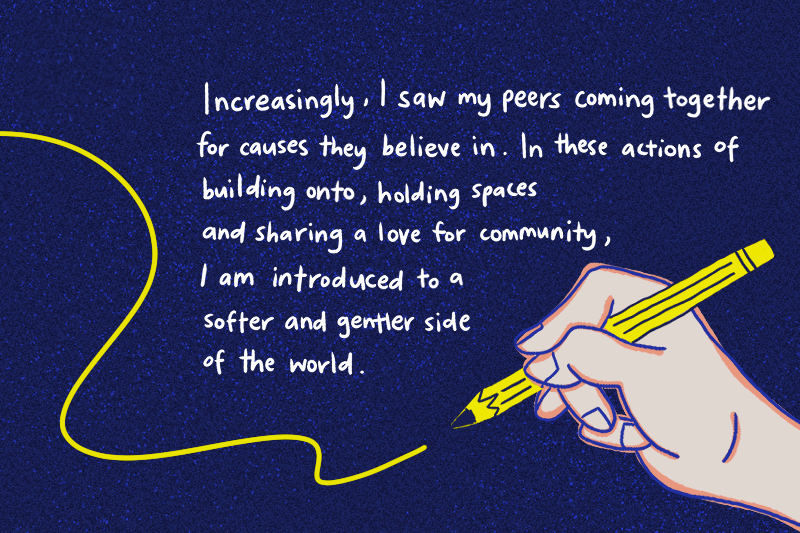
Of course, community cannot be built alone, and I was inspired by my friends who continue to believe and work for it in their respective groups and ways. Be it in making art or sharing resources for conversations about race or spearheading initiatives advocating for greater focus on mental health, I see my peers increasingly coming together and being more vocal about the causes they believe in, fighting against the label of apathy commonly associated with being young. In these actions of building onto, holding spaces and sharing a love for community, I am introduced to a softer and gentler side of the world that isn’t engrossed with stocks and shares and the traditional markers of success. Who says youth is wasted on the young? In an idealistic sort of way, I saw working in the arts as an alternative to the rat race, an oasis of sorts to focus on people and connections and the things that really mattered in life. In carrying out marketing work at ArtsWok and playing a role in the various community-based projects, I could stay grounded by continuing to be creative through illustrations and design, and also by finding a community in a team of people I feel at home with.
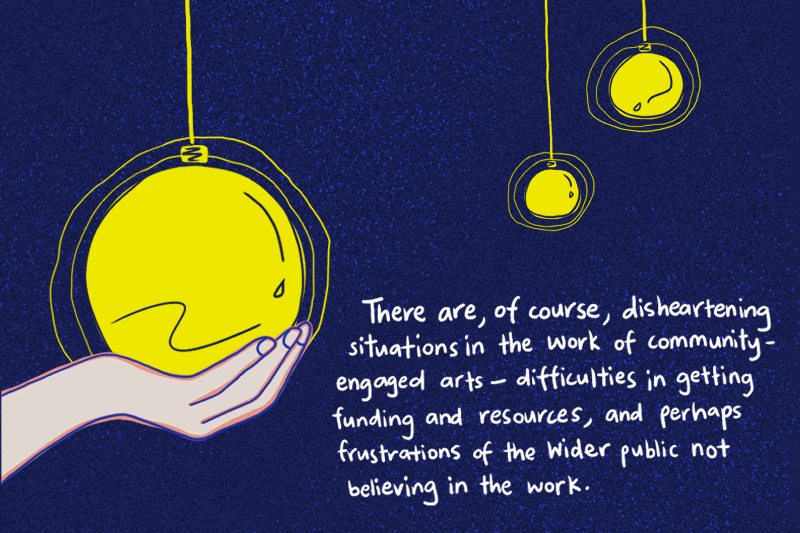
As optimistic as I want to be, stepping into the field of community-engaged arts definitely came with some difficulties, the big one for me being imposter syndrome. I guess this might come with being in any craft, though I seem to feel it more strongly so in the arts. Additionally, working for the community rather than myself also raises the stakes, where my work might potentially impact people other than myself. Having had the chance to meet and work alongside many distinguished and inspiring individuals innovating and pushing boundaries in the field, I wonder what else I can offer. While I rationalise my lack of experience as a natural start to any journey, I feel especially small when I measure my abilities to the larger picture– what do illustrations and designed proposals contribute to the more collaborative, creative society that we aspire towards?
Despite believing in the possibility of an ideal arts-driven, connected world, I cannot help but feel a little demoralised upon realising the systemic obstacles in this field, namely the difficulty of getting funding and resources. As someone with a newfound understanding of what went on behind-the-scenes of the various programmes, I realise how large-scale they really are–how much thought is given to conceptualising every step of these projects, and how much time is actually needed. From deliberating the meaning of various branding colours, to conducting workshops with different demographics, to ensure the greatest cultural sensitivity. So much care and effort goes into developing and executing these events as a show of unconditional belief in the potential of the community, yet the lack of funding remains a constant issue. Having only experienced the initial stages without witnessing the eventual fulfilment of these years-long projects, or a visible change in the communities we have worked with, this lack of support seems to signal that the impact of arts-based community work has not yet been fully recognised and validated. Working in the time of the pandemic/ Covid-19 doesn’t help either, when most of the interactions with the immediate community we work with, and the community we are working for, are done online. Connection is the most important part of community-building and the absence of face-to-face interaction is an obstacle, to say the least–how can we work with a community without forming that real-life relationship?
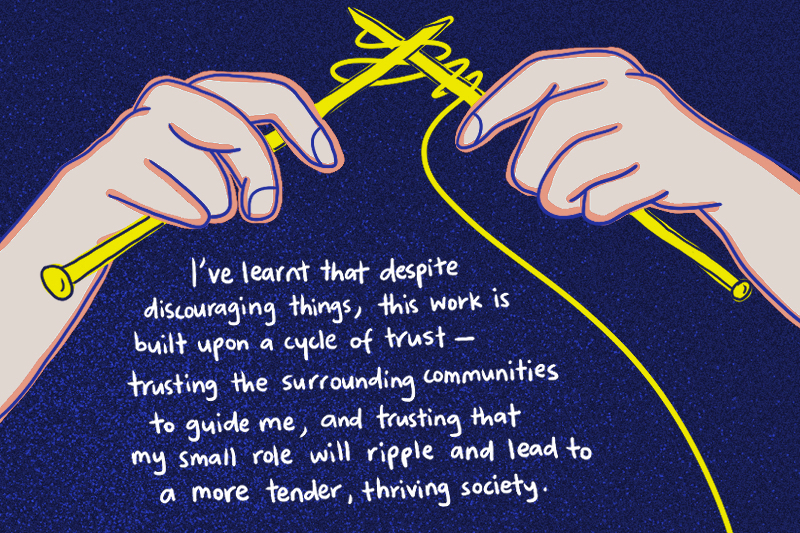
Though there are things to be disheartened by, there are even more things to celebrate. I am heartened when witnessing how the projects evolve with communities in mind and how people of varying backgrounds and specialties share perspectives and work together with a common confidence in the work. For example, how theatre makers, producers, designers (to name a few), gathered in our hours-long Both Sides, Now meetings to update their respective development and to seek feedback. I am encouraged when listening to how passionately artists and participants engaged with each other during our Greenhouse Sessions, even through the tiny frames of Zoom. I am inspired by the significance of volunteers in our programmes–though I first took this as another instance of a lack of resources, I realise now that relying on volunteers just means that there is a steady group of people who believe equally in the work that we do. It may be difficult for me sometimes to envision the bigger picture, that whatever small role I play has a part in creating more inclusive communities, but for now I continue to be energised by the people around me and their hopes for the future.
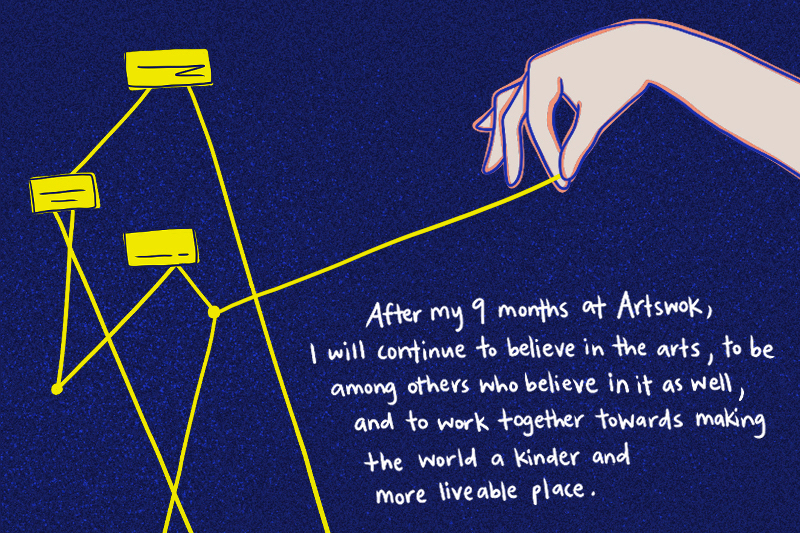
I cannot say for sure that I have made a difference in the wider community, but I think that I have contributed to my immediate community at ArtsWok during my traineeship. With more experience and confidence, I have come to realise that my work is not insignificant. It takes a community first and foremost to impact, create, change other communities, and my role, no matter how small, is a part of this ripple effect. It is a whole cycle of trust–trust in the community around you to guide you and build upon your work, and trust in the eventual goal of a kinder, thriving society. This is the nature of long-term community work, I suppose–that it is fuelled by a beautiful, stubborn belief.
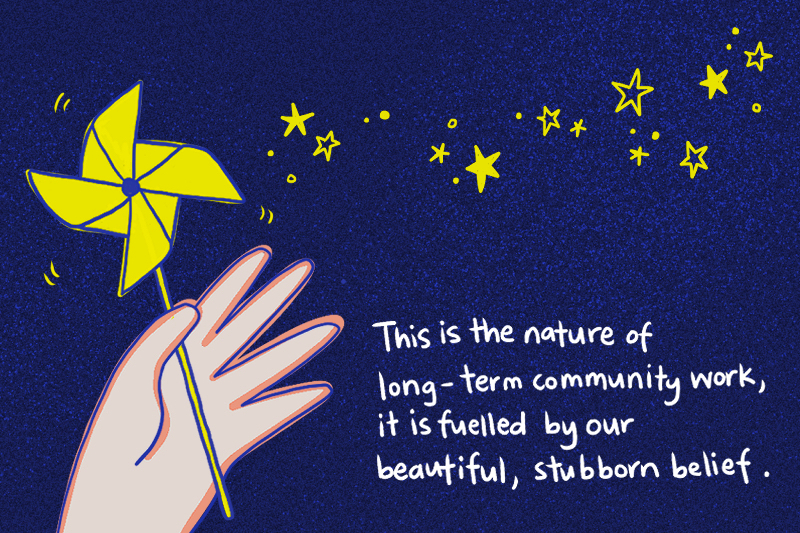
About Tay Jing Hui

Tay Jing Hui (Jing) believes in the beauty of art and community, and dreams of a world where their possibilities are recognised. She is an illustrator and dancer at heart. While she does not usually write, this was a new, exciting venture.
Jing graduated from Yale-NUS College in 2020 with a major in Arts and Humanities and minor in Psychology. She was a trainee with ArtsWok Collaborative from November 2020 to August 2021. During her time at Yale-NUS, she co-founded and directed R21, an independent multimedia dance production that hoped to break the silence surrounding sexual assault and violence on campus.
Currently, she is a studio assistant at Singapore Teachers’ Academy for the aRts (STAR).



